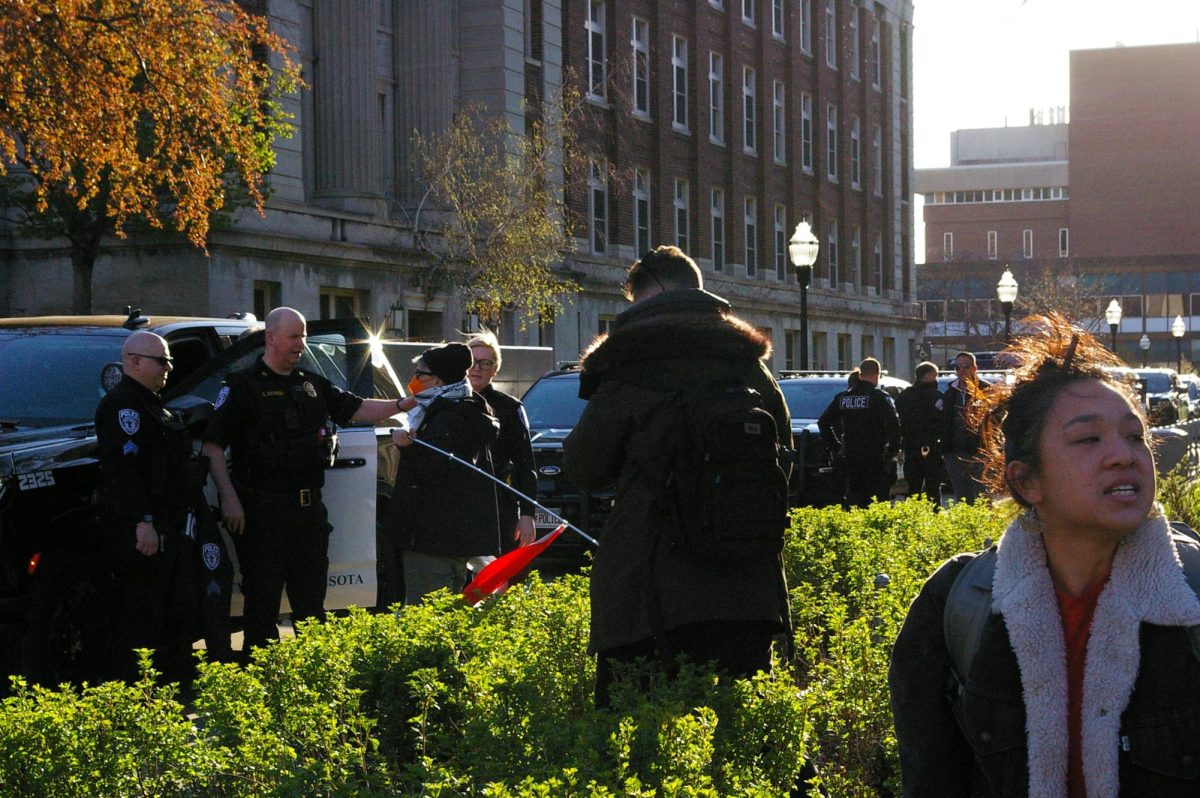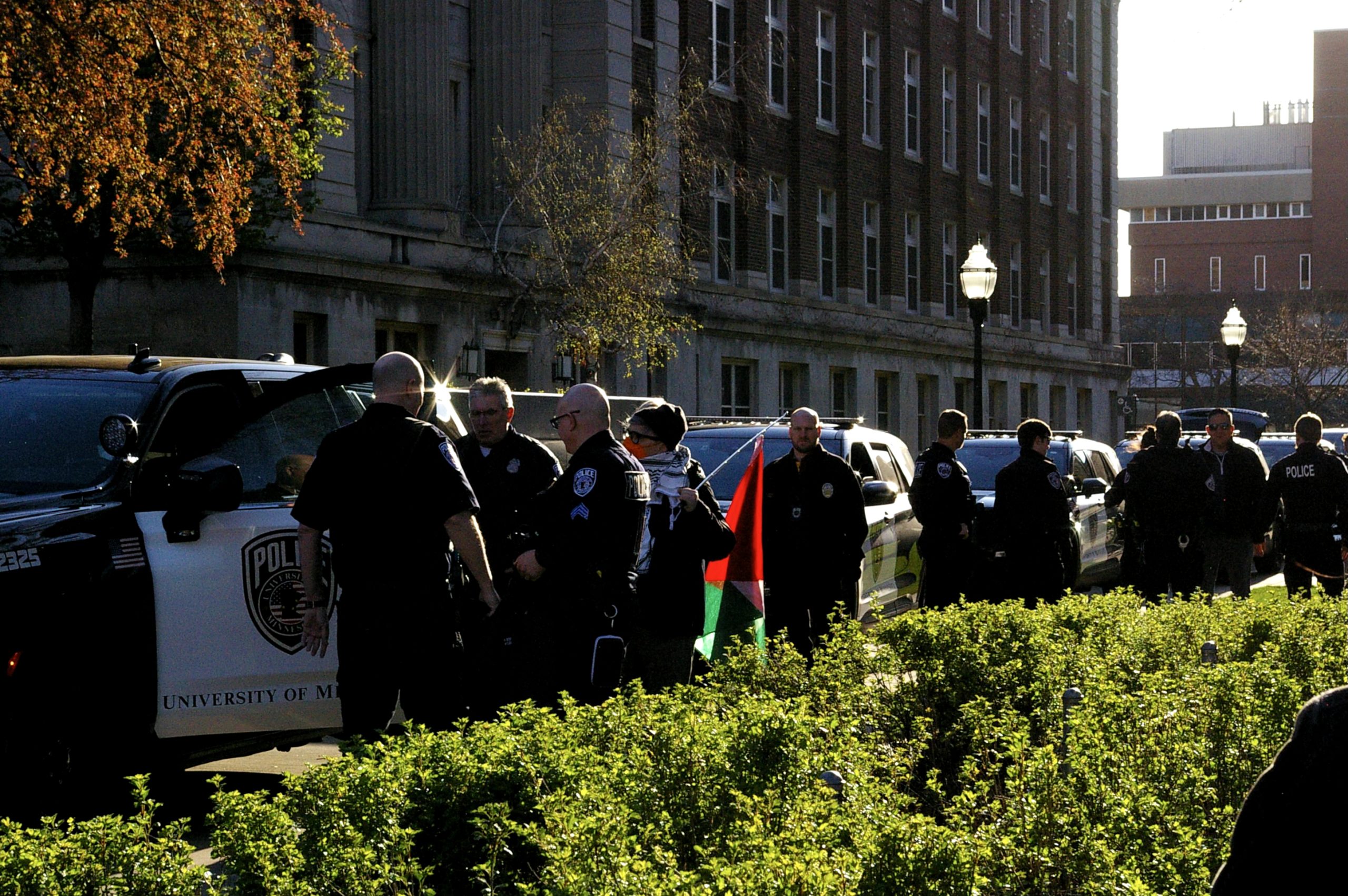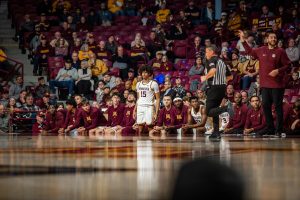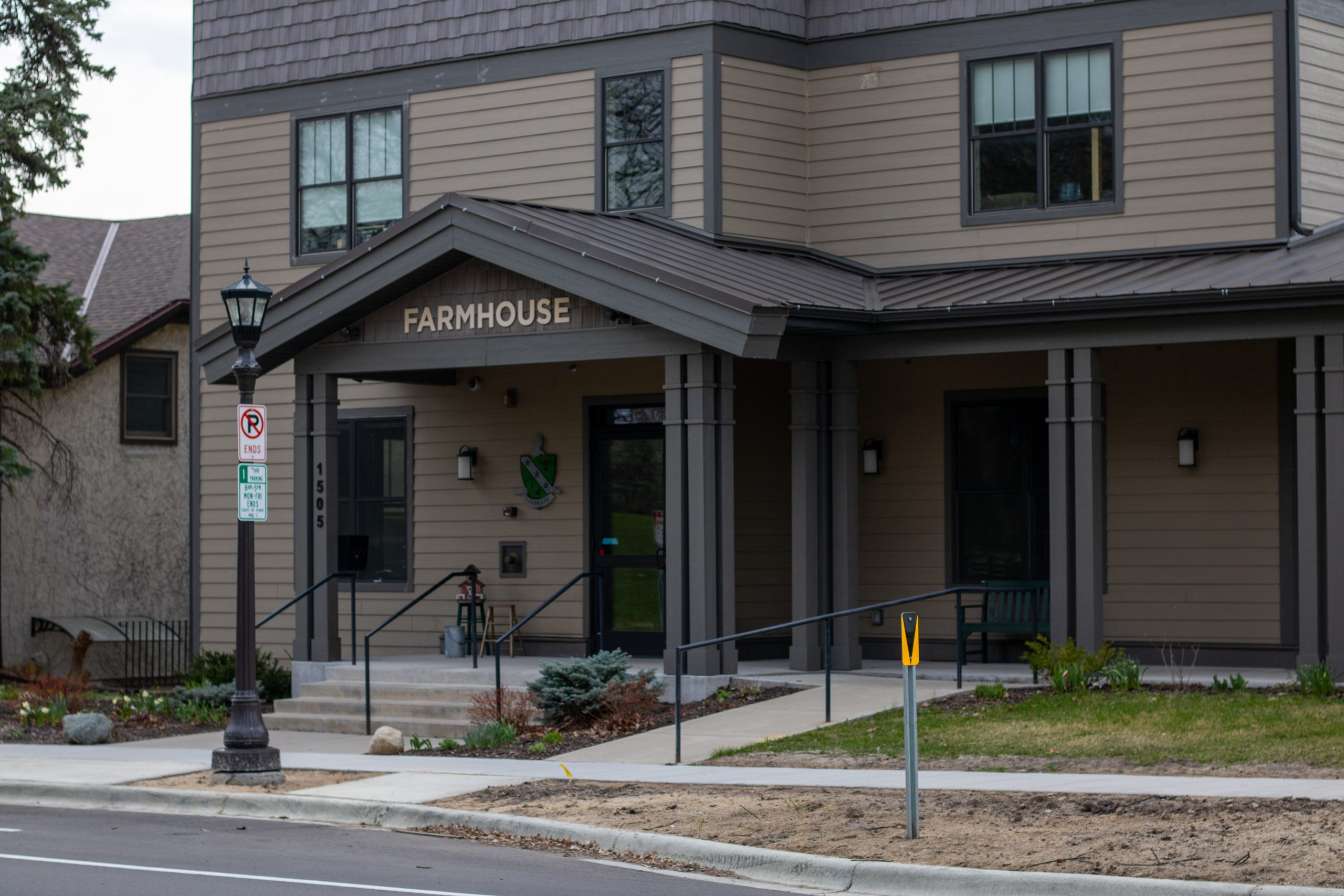Sickle cell trait was long thought to be common but relatively benign in its carrierâÄôs body. Now, the traitâÄôs connection to a number of mysterious deaths has brought it to the center of a complex debate in college athletics. In this decade, 11 young men have died suddenly and inexplicably during football practice with the only unifying factor being that each had sickle cell trait. In the wake of this evidence, the NCAA has recommended that schools screen athletes for sickle cell trait, so as to know which students might be at risk for a similar sudden tragedy. The trait, which when carried by two parents can result in a child with sickle cell disease, is present in an estimated one in 12 black Americans. Only four percent of Americans with the trait are non-black. But the science on sickle cell traitâÄôs effect on the body is inconclusive, and experts are uncertain whether it actually caused all âÄî or any âÄî of these deaths. Others have raised concerns of test results being used for a discriminatory purpose. The debate is complicated by elements of race, medical uncertainty, bioethics and tragedy. Like the sickle cell itself, the issue takes a shape which will not pass smoothly. âÄúThereâÄôs a body countâÄù In 2001, 18-year-old Devaughn Darling collapsed and died during an off-season workout at Florida State University. Three years later, his family received a $2 million settlement from the university. In 2005, 19-year-old Aaron OâÄôNeal collapsed during a voluntary July workout at the University of Missouri and died that day in an emergency room. In March of this year, the university reached an undisclosed settlement with OâÄôNealâÄôs family. Two days after the OâÄôNeals settled with the University of Missouri, the family of Ereck Plancher, who died during a spring 2008 workout at the University of Central Florida, announced that it was suing the school. Each of these three young men had sickle cell trait. So did Dale Lloyd II, who died at the age of 19 during a June 2006 practice at Rice University. LloydâÄôs family sued both Rice and the NCAA, and three months ago the family settled with the two institutions. Though no monetary compensation was made public, another aspect of that settlement was meant to change the way colleges and their athletes view sickle cell trait. As a result of that lawsuit, the NCAA has recommended that all of its member schools begin testing athletes for sickle cell trait. The recommendation is now working its way through committees and in January 2010 may be enacted as an NCAA-wide mandate. Oklahoma team physician Scott Anderson has become an outspoken advocate of sickle cell tests. Anderson became aware of the potential complications of sickle cell about 10 years ago when one of his players was suffering from back spasms during the first day of football conditioning. Anderson and the doctors who treated the player assumed the August heat had caused the pain, but the doctors also made note that the athlete had sickle cell trait. Anderson changed his opinion after Dr. Randy Eichner joined the Oklahoma staff and told him the player had been experiencing exertional sickling : the process of blood cells changing shape from physical activity and lack of oxygen. This possibility was something that had not occurred to Anderson, and, he knew it had not occurred to most college trainers across the country. From that point, Anderson began screening all athletes who came to the University of Oklahoma. But at that time, Anderson recalls, early in this decade, the NCAA did not even mandate a pre-participation physical examination. âÄúSo how are they going to require or even recommend a component of something that doesnâÄôt even exist?âÄù Anderson said. Anderson and his staff had these revelations about eight or nine years ago. Since then, Devaughn Darling, Aaron OâÄôNeal, Ereck Plancher, Dale Lloyd II and seven other healthy-looking young men have laid down in front of their teammates and friends, dying. Scott Anderson wants more experimentation done on sickle cell trait and its role in these deaths. But he refuses to wait for definitive test results. âÄúThere certainly is more research to be done,âÄù Anderson said. âÄúBut in the meantime, thereâÄôs a body count thatâÄôs growing.âÄù âÄúA lot not knownâÄù Dr. Sophie Lanzkron, director of the Sickle Cell Center for Adults at Johns Hopkins University, said it is conceivable that sickle cell trait carriers could be at risk for a catastrophic event during physical exertion. But it has not yet been proven. Lanzkron said that to even study sickle cells is tricky. The cells take their abnormal shape when deprived of oxygen. When a doctor attempts to perform a biopsy on those blood cells, they will begin to sickle the moment they are removed from the body and lose oxygen. The same would be true of sickle cells in the body of someone who has taken his last breath. Because of this, Lanzkron said some coroners may have diagnosed a sickle-related death because they observed blood cells which actually changed shape after the athlete had died. âÄúReally, honestly it hasnâÄôt even been studied enough to know whether itâÄôs true,âÄù Lanzkron said. âÄúThereâÄôs a lot not known.âÄù âÄúA potentially stigmatizing factâÄù Kansas City Chiefs wide receiver Bobby Engram, 36, has sickle cell trait and is three games into his 14th NFL season. Engram caught six passes in a Super Bowl and in the early 90s rewrote the Penn State University record books, including a four-touchdown performance against Minnesota. Engram says he has experienced cramping a few times during practices and games, but he does not know whether his sickle cell trait caused it. He said he would support testing college athletes, so long as the results did not lead to discrimination. âÄúMy only concern is that, whenever they gather the information, that itâÄôs used in a positive way,âÄù Engram said. âÄúI just donâÄôt want it to affect any young kid coming into college and having a chance to go get a scholarship.âÄù Carlton Haywood is a bioethicist at Johns Hopkins. Haywood is black. And Haywood has sickle cell disease. Haywood said the issue of screening athletes for sickle cell trait is full of complexities. He is concerned about the protection of athletesâÄô privacy. âÄúThat is a potentially stigmatizing fact about them,âÄù Haywood said. âÄúHow are they going to protect that information?âÄù He is concerned about the possibility of athletes finding out that they are carriers of trait, but not being told what exactly that means. Haywood is also worried trait testing would be done only on black athletes. âÄúEthically, if youâÄôre going to do screening for sickle cell trait, you should screen all your athletes,âÄù Haywood said. âÄúAgainst the natural grain of coachingâÄù The high-profile deaths blamed on sickle cell trait have brought about drastic change in the University of MinnesotaâÄôs policy. Physician David Olson works with basketball players, but treats all kinds of athletes at Bierman Field Athletic Building. Olson said in the past he observed athletes struggling with cramps in practice and counseled them to get testing. But in recent years, all incoming athletes have had the risks of sickle cell explained to them, and then been asked whether they know or want to know their status. If an athlete states that he or she knows his status, Olson said a physician will ask them to find documentation to prove it. Similarly, Scott Anderson said incoming Oklahoma football players fill out a form that asks for their medical history, including whether the athlete has sickle cell trait. âÄúInvariably the answer to that is âÄòNo,âÄô âÄù Anderson said. âÄúSo if we were relying merely upon an answer on a questionnaire, there would be ample room for nervousness with that.âÄù Anderson said that of 19 Oklahoma players who have tested positive for the trait, only two had any prior knowledge. In the years since this method of education and voluntary testing has gone on, Olson said that not a single University of Minnesota athlete he has come across has refused a test. âÄúWe havenâÄôt felt that weâÄôve missed anybody,âÄù Olson said. After an athlete tests positive for the trait, privacy laws dictate the physician must first ask the playerâÄôs permission before telling a coach. Again, when the potential risks are made apparent to the athlete, Olson said he canâÄôt remember an athlete refusing to share the information with a coach. Olson confirmed that there are several athletes with sickle cell trait on campus, and says that, anecdotally, he has seen a slightly higher incidence of sickle cell carriers experiencing cramping, which may spell the onset of a problem. Olson first saw evidence of this when he served his fellowship at the University of Notre Dame, where he worked with a black athlete who experienced an inordinate amount of cramping. The athlete was tested and confirmed to have sickle trait. But Olson said the trait does not impede achievement. âÄúYou can have kids that have sickle cell trait that are just extremely amazing,âÄù Olson said. âÄúAnd they have absolutely no problem, ever, with cramping.âÄù Olson said MinnesotaâÄôs coaches are educated on the issue and have been responsive to physiciansâÄô warnings and athletesâÄô complaints. Indeed, simply having knowledge of an athleteâÄôs status has not prevented tragedy. Ereck Plancher was known by Central Florida trainers and coaches to have the trait, and Devaughn Darling only found out that he was a carrier through the school physical. Olson said one aspect which may explain why football players are stricken with sickling more often is their outsized body types. But Aaron OâÄôNeal and Devaughn Darling, both linebackers, were tall and lean. Ereck Plancher and Dale Lloyd II, both wide receivers, were downright small by football standards. Former University of Toledo coach Tom Amstutz coached tailback William Bratton for four years and knew that Bratton was a carrier from the time he recruited him. Amstutz allowed Bratton to skip drills and sometimes entire practices. It paid off: as a freshman Bratton struggled to make it through a practice, but his senior season was his best, with 639 yards on 114 carries. When he talks about sickle cell trait and its effects, Amstutz said, repeatedly, that it is a real occurrence. âÄúYou have to, as a coach, understand that thatâÄôs a situation, and thatâÄôs not made up,âÄù Amstutz said. âÄúWe knew Will Bratton was a very tough football player and loved the game. He was not going to try to take himself out.âÄù In his years at Oklahoma, Scott Anderson has never seen what he would consider an emergency case with his players. He credits this to open communication and the willingness of head coach Bob Stoops to not look at a struggling athlete and urge him to push through pain. âÄúIt goes against the natural grain of coaching, which is pushing players, and taking them past the point that they would take themselves,âÄù Amstutz said. âÄúBut I would not feel comfortable coaching a young man that was not screened.âÄù










